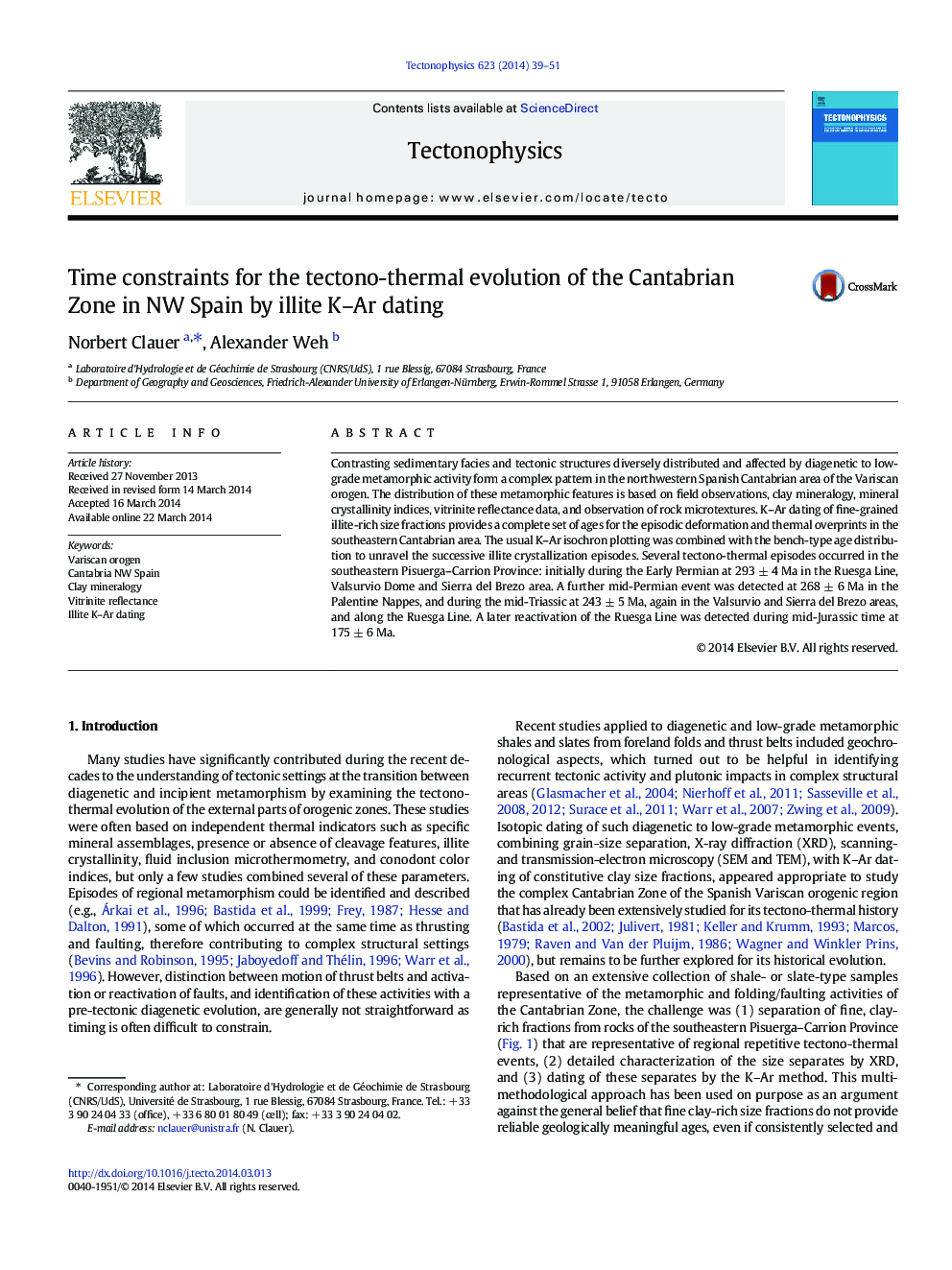| Article ID | Journal | Published Year | Pages | File Type |
|---|---|---|---|---|
| 4691982 | Tectonophysics | 2014 | 13 Pages |
•Dating tectono-thermal events in varied Cantabrian low-grade metasediments•Study on field observation, rock textures, clay mineralogy and vitrinite reflectance•Illite K-Ar dating gives a large set of ages for episodic tectono-thermal events•Combined isochron and bench-type distribution consolidate successive illitization events•Tectono-thermal events were set at 293 + 4, 268 + 6, 243 + 5 and 175 + 6 Ma
Contrasting sedimentary facies and tectonic structures diversely distributed and affected by diagenetic to low-grade metamorphic activity form a complex pattern in the northwestern Spanish Cantabrian area of the Variscan orogen. The distribution of these metamorphic features is based on field observations, clay mineralogy, mineral crystallinity indices, vitrinite reflectance data, and observation of rock microtextures. K–Ar dating of fine-grained illite-rich size fractions provides a complete set of ages for the episodic deformation and thermal overprints in the southeastern Cantabrian area. The usual K–Ar isochron plotting was combined with the bench-type age distribution to unravel the successive illite crystallization episodes. Several tectono-thermal episodes occurred in the southeastern Pisuerga–Carrion Province: initially during the Early Permian at 293 ± 4 Ma in the Ruesga Line, Valsurvio Dome and Sierra del Brezo area. A further mid-Permian event was detected at 268 ± 6 Ma in the Palentine Nappes, and during the mid-Triassic at 243 ± 5 Ma, again in the Valsurvio and Sierra del Brezo areas, and along the Ruesga Line. A later reactivation of the Ruesga Line was detected during mid-Jurassic time at 175 ± 6 Ma.
